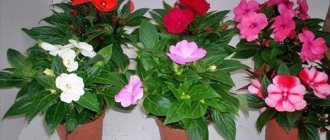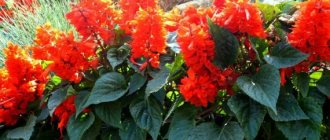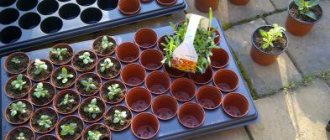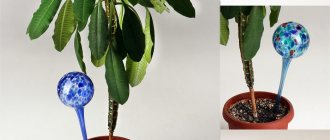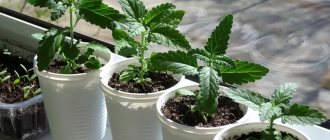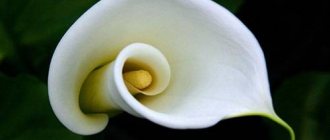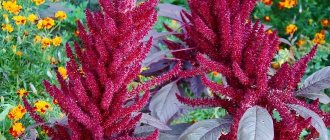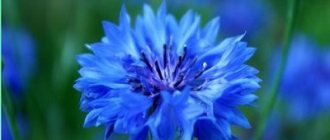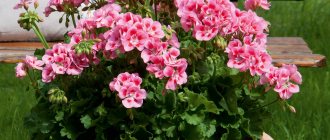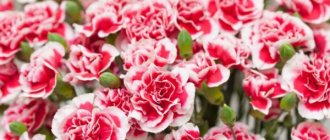Gazania, or Gazania, belongs to the Asteraceae family. It can be either annual or perennial. Find out when to sow gatsaniya and how to properly care for it so that the plant decorates the flower garden until late autumn.
Gazania comes from South Africa, so the flower is often called African daisy. However, with its large single baskets, it more closely resembles a gerbera. Depending on the type, the diameter of the flowers ranges from 5 to 10 cm. At the same time, the height of the peduncle does not exceed 15-30 cm.
The flowers come in a variety of colors: white, orange, red, crimson, yellow. Typically with dark spots or stripes at the base that form a ring pattern around a yellow or tan center. There can be up to 35 such inflorescences on one plant.
Their attractiveness is complemented by dark green or grayish-green leaves. They are dense, varied in shape, with thick silvery fibers on the underside of the plate, which serve the plant as protection from cold and retain moisture during drought.
The plant blooms at noon, for which in Western Europe it is called “midday gold.” And in cloudy weather and twilight, the petals of many types of gazania curl and cover the center of the inflorescence. In the middle zone, flowering begins in June and lasts until the autumn cold.
The flower was named after the priest Theodor von Gatz, who translated the botanical works of Theophrastus and Aristotle from Greek into Latin.
Origin
South Africa is considered the birthplace of gatsania, which is why it is often called African chamomile. In appearance, the flower is very reminiscent of the popular Russian favorite, which has a brighter outfit and a slightly enlarged bud.
The official name of the plant comes from the name of the Italian translator Theodor von Gaza, so it would be more correct to call the plant “Gazania”.
The name “Flower of the Midday Sun” became a more poetic name. This is due to the fact that the unusual bright petals open as fully as possible at midday.
In the wild, gazania is still found in Africa and Mozambique, as well as in some areas of Australia.
The flower came to Europe in the 17th century and immediately won the love of gardeners for its exquisite bright colors and the unusual shape of the blossoming bud. In Russia, gatsania flowers are still quite rare.
Diseases and pests
The main pests of the plant are spider mites and aphids. The fight against them consists of treating the plant with insecticides and covering it with a film during treatment.
Another danger to African daisy is gray mold. You can avoid the appearance of rot by following the watering regime. The manifestation of the disease is the appearance of dark spots on the trunk and leaves. You can fight it with the help of special antifungal drugs, but it is better to remove the plant to avoid infecting other crops.
Description
The growth of the flower does not exceed 30 centimeters. A small stem holds the flowers themselves and the basal leaves, forming a dense rosette.
The leaves have dark green or gray-green shades; on the back there are tiny hairs that retain heat when temperatures drop and water during dry periods. Bright flower baskets reach 9 centimeters and amaze with their bright colors.
The most common:
- bright yellow and orange;
- fire and bronze;
- rich and delicate pinks;
- white and purple petals.
During the season, gazania can produce approximately 30 buds, but under normal conditions it will produce only 10-12 flowers.
Types of gazania
Gazania hybrid
This includes gazania varieties of hybrid origin. A perennial plant, hybrid gazania is grown as an annual. The height of the plant is approximately 30 cm, the leaves are palmately dissected or linear, green, silvery-white below. Inflorescences are about 8 cm in diameter, reed flowers of different colors. Hybrid gazania blooms profusely until the coldest weather.
The range of hybrid gazania is constantly updated. Recently, a large number of varieties have appeared with inflorescences ranging from yellow and pink to reddish-bronze colors, with sterile tubular flowers, thanks to which the baskets do not fade for a long time. There are also terry forms. Such varieties practically do not produce seeds, so they are propagated only by cuttings. New varieties obtained through seed propagation differ from old varieties in their early and abundant flowering. In addition, they are more flexible, tolerate cool weather better, and in the morning the inflorescences open much earlier. Such cultivars have low, compact bushes and brightly colored, large inflorescences, often with dark spots at the base of the reed flowers, which makes them highly decorative.
Gazania is a bit harsh
A perennial plant cultivated as an annual. Stems 20 cm high, with ascending side shoots. The foliage is dense, whole, sometimes notched, dark green, white-pubescent below, without petioles. Gazania harsha has large, single baskets of inflorescences that are very showy.
A very beautiful, perennial plant, cultivated mainly as an annual. The stems are short, 20-30 cm high, densely leafy, with ascending side shoots. The leaves are dense, entire, sometimes moderately incised, dark green, white pubescent below, without petioles. The inflorescences are large, single baskets, 4.5-6 cm in diameter, extremely showy. Reed flowers are bright, yellow-orange, orange or red, with spots of brown, black and white at the base; tubular - purple-black. Blooms profusely from June to November. Up to 35 inflorescences develop on one plant. Achenes are pubescent, with a two-row pappus.
Gazania peacock
Perennial subshrub, grown as an annual. Gazania peacock has a short stem, leaves are narrow, split or entire, green on the upper side of the leaf with hard pubescence, and white pubescent on the lower side.
The stem is very short, the leaves are narrow, up to 20 cm long, entire or slightly cut, green on the upper side with hard pubescence, white pubescent on the lower side. The inflorescences are large, more than 8 cm in diameter, tubular flowers are yellow, ligulate bright orange with a black spot at the base. Blooms from mid-summer to autumn.
Gazania single-flowered
Compact plant. Its creeping stems and rosette of leaves of various shapes form a “cushion” 10-15 cm high. The central vein of the leaf below is devoid of pubescence. The baskets are pale yellow, up to 5 cm in diameter, numerous.
Plant 10-15 cm high with creeping stems. The leaves are long, variable in shape, glabrous above, white-pubescent below (except for the central vein). Inflorescences are up to 5 cm in diameter, light yellow. It blooms from mid-summer to autumn, forming dense, profusely flowering carpets.
Gazania long rifle
The inflorescences of this plant reach 7 cm in diameter. The flowers are golden yellow with a brown base. It is a low-growing annual with a creeping stem. The length of this flower is about 20 cm. The flowering of gazania single-shot lasts from August until frost.
Annual or perennial?
The description of the original plant would be incomplete without indicating the age of life of the elegant inhabitant of the flower beds.
In its historical homeland, gatsaniya does not experience any difficulties with growth and tolerates “winter” well, being a perennial plant. In Russia and Europe, the flower does not tolerate cold weather and is considered an annual.
Of course, you can carefully dig up this representative of the kingdom of Flora and transport it to a city apartment or a comfortable private house, but the plant does not always survive even in such greenhouse conditions, so it is still better to grow a flower every season.
Selecting a location
The tropical resident is very sensitive to temperature changes and requires constant good lighting.
A place for it is chosen on the sunny side, away from large trees or buildings that can create shadow.
The type of soil does not play a special role; gatsania is grown on any soil if it:
- easy;
- fertile;
- water permeable.
The distance between plants should be at least 20 centimeters, so you will have to find a larger place for seedlings.
Growing
In warm areas, growing from seeds can be done outdoors, but most gardeners will have to use the seedling method.
Gatsania seeds are placed in the ground in mid-February-early March. The preferred option would be to use peat pots, which are later transferred to a permanent place of residence without damaging the roots.
Planting material is planted in a large container in a checkerboard pattern at a distance of at least 4 centimeters from future neighbors.
After planting is completed, the soil is carefully watered, the container is covered with glass or film, and the pots are placed in a warm place. Sprouts should appear in one and a half to two weeks. All this time it is necessary to monitor the humidity of the earthen ball, the absence of condensation on the glass and the presence of fresh air.
After germination, the container with seedlings is transferred to a well-lit place and the temperature is slightly reduced. In April, the pots can be sent to a glazed but unheated loggia, monitoring the temperature. An ideal environment would be a place with a thermometer reading of 12-15 degrees.
What to do with seedlings?
If you listened to the advice and took a deep box to grow seedlings, then you won’t have to plant the seedlings, since the root system will feel quite comfortable, however, if you did take a shallow box, you will have to replant the seedlings. Transplantation is carried out when the fourth true leaf appears on the seedlings. For picking, take peat pots. When the seedlings reach this size, they must be moved to a cooler place where the air temperature will remain at 13-15 degrees. A glazed balcony or loggia is best suited for this. Also during this period, seedlings should be accustomed to the temperature outside. For this purpose, it is recommended to open the window for a while, but make sure that the seedlings are not exposed to a draft.
Transfer
Planting gatsaniya outdoors is not difficult. For normal development of the plant, planting holes with a depth of 20 to 30 centimeters are required, depending on the height of the pot. It is recommended to put a layer of grass without roots and seeds at the bottom. This will provide the gazania with fertilizers and remove excess moisture.
When growing seedlings in containers not intended for burial in the soil, the plants are removed very carefully. It is important not to damage the roots and preserve the earthen ball.
The optimal time to plant gazania in open ground depends on the climatic conditions of the area and the specific year. In any case, it is better to postpone this event until the frosts are completely over. Most often this procedure is carried out in May-early June.
If planting and caring for gazania in the open ground proceeds correctly, the flowers will appear in 1.5-2 months.
Reproduction
During periods of consistently warm weather, replanting can begin. Usually at the end of May or beginning of June. Gatsania propagates most often by seed, less often by vegetative means. Already 3 months after planting it begins to bloom.
In mid-summer, you can propagate gatsania using cuttings. You need a small part of the stem with a heel no more than 10 cm. The bottom leaf should be cut off and the cut should be treated with root. Cuttings must be planted in specially prepared soil. After mandatory watering, cover with cling film.
Care
Caring for a gazania is not too difficult. The plant needs:
- regular loosening and weeding;
- moderate watering;
- feeding
A resident of hot countries is watered only during the dry season; in a normal summer, rainwater will be enough for her.
Fertilizing is carried out with mineral fertilizers once a month.
After the bud fades, it must be trimmed. This will enable the plant to form a new flower.
Preparing for winter, collecting seeds
When grown in temperate climates, the plant's seeds rarely have time to ripen. This is only possible if the summer is hot and long. The seeds of the plant are light, so they can fly away when the wind blows. To prevent this, wrap the wilted inflorescences with gauze. After two months, when the seeds are ripe, they can be collected and placed in a paper box. The collected seeds should be stored in a cool, dry place.
Use in landscape design
As the photo of gatsania shows, the plant will wonderfully decorate any flower beds and create amazing borders. It can be planted individually or in whole families, achieving a mixture of bright colors.
Low plants without flowers or with blue buds will look great next to gazania. Alpine slides and rockeries will decorate well with elegant gatsaniyas.
The plant can also please gardeners who are deprived of their own plot of land, charmingly decorating balconies and window sills.
